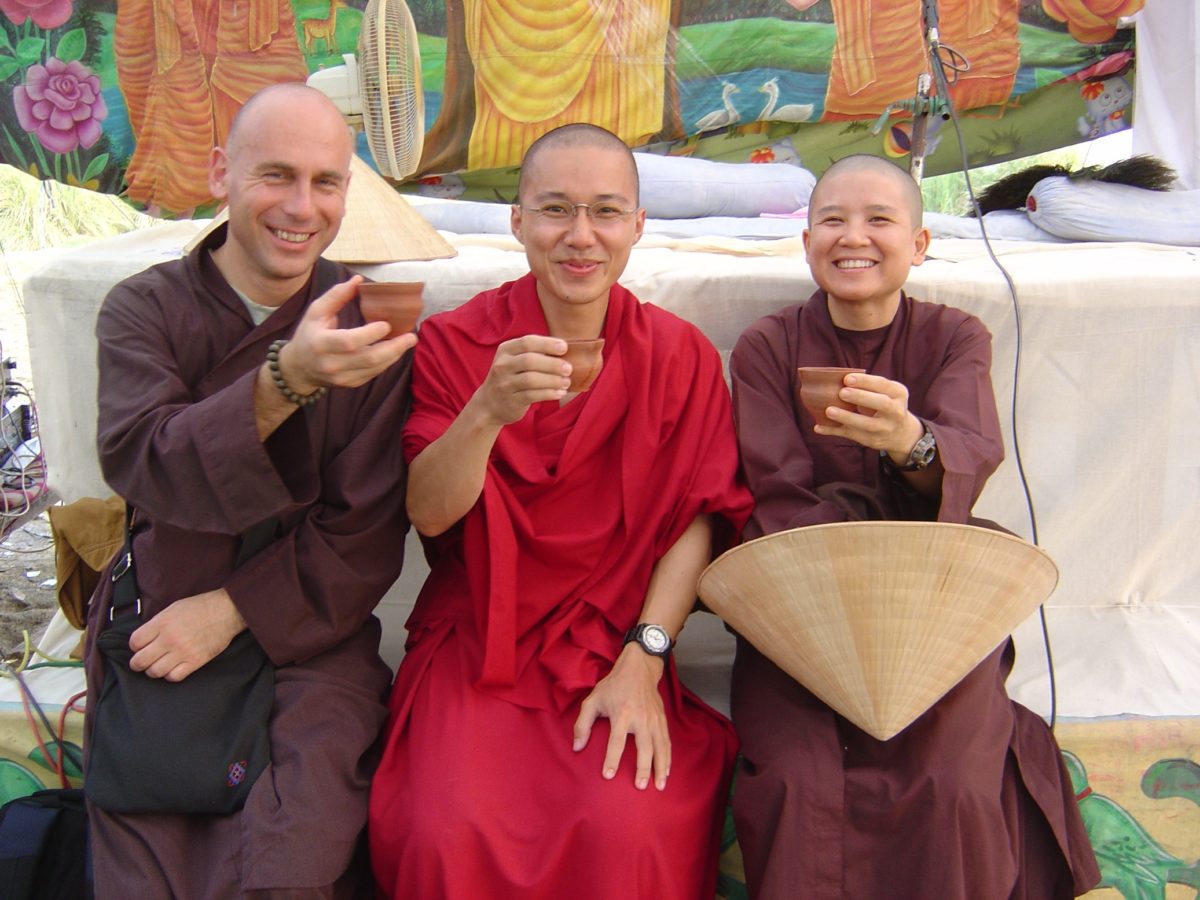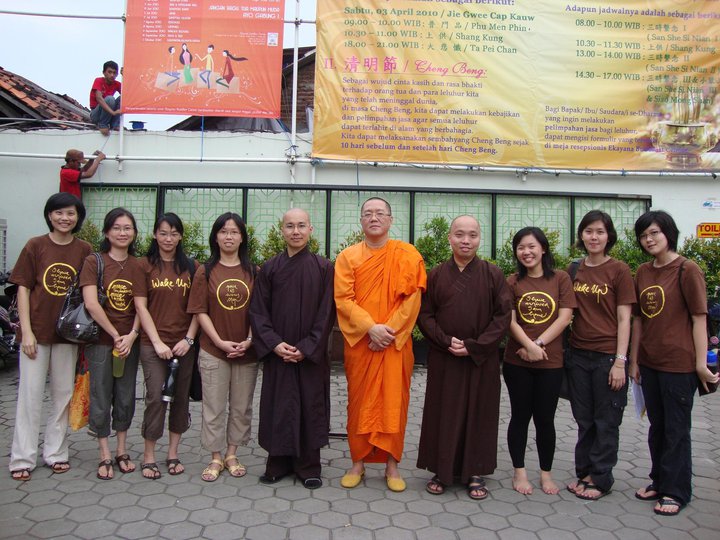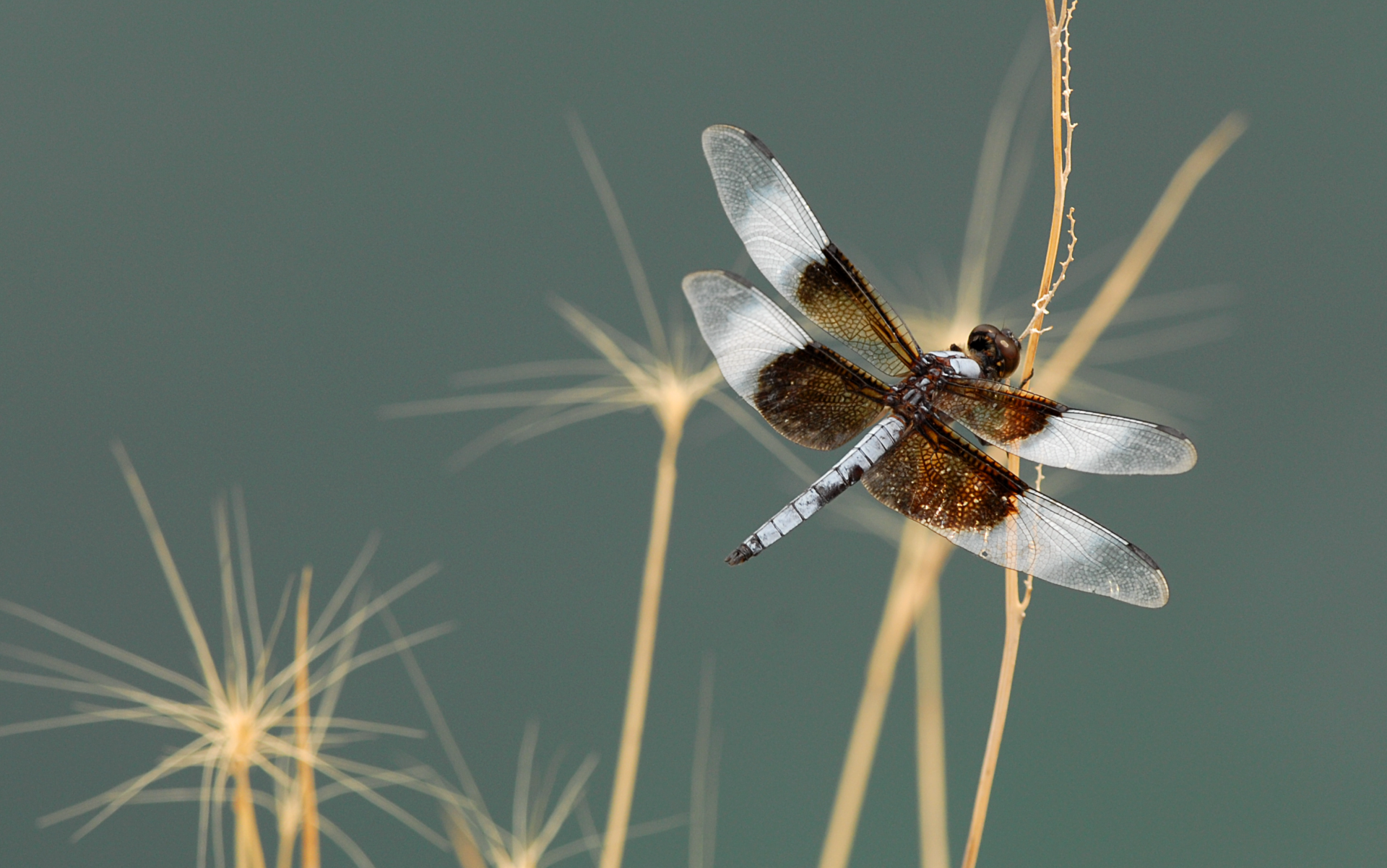Please Call Me by My True Colors
By Brother Chan Phap Tu

My precious master Thich Nhat Hanh says, “Please call me by my true names.” This is a very interesting saying. When I look into myself, sometimes I don’t know which name is my true name! Currently my name is Brother Chan Phap Tu,
Please Call Me by My True Colors
By Brother Chan Phap Tu

My precious master Thich Nhat Hanh says, “Please call me by my true names.” This is a very interesting saying. When I look into myself, sometimes I don’t know which name is my true name! Currently my name is Brother Chan Phap Tu, which means “True Dharma Son.” Sometimes the brothers and sisters in Plum Village like to call me “Dharma Death” because “Tu” has that other meaning, “death.”
My other true name is Tenzin Donpal, a Tibetan name. His Holiness the Dalai Lama gave me this name when I received novice ordination in Dharamsala, India, in 2008. Another one of my true names is Nyanabhadra, which was given to me by my first ordination master, Venerable Dharmavimala, in Indonesia in 2007. My master’s lineage is from both the Myanmar Theravada tradition and the Mahayana tradition from Guang Hua Monastery in Putian, Province of Fujian, People’s Republic of China.
In Touch with Islam
I grew up on a small island near Sumatra, Indonesia. My ancestors came from Fujian Province in mainland China, so my blood is Chinese and my passport is Indonesian. I’m the seventh of eight children. Both of my parents passed away when I was four years old, and my elder brothers and sisters took care of me. My eldest brother had to continue my father’s business, and my eldest sister had to take over my mother’s duties in the kitchen. I remember my sister crying day and night; she was young and wished to continue her studies, but she could not. After completing high school, I pursued my bachelor’s degree in West Java. I was so excited to study more and more in order to repay my family’s kindness. I earned a diploma in Information Technology and a bachelor’s degree in Computer Science.
In Indonesia, the majority of people are Muslim. Naturally, growing up there, I had a lot of opportunities to be in touch with Islam. Even now I appreciate Islamic teachings so much. For me, the five prayer times that are part of every day are a kind of meditation. Whenever I hear the call to prayer from the loudspeaker of the mosque, I stop and breathe deeply at least three times to come back to myself.

In Touch with Buddhism
When I was in fourth grade, I encountered the teachings of Theravada Buddhism for the first time. I was so inspired by the story of Siddhartha sitting beneath the bodhi tree! I liked to read it again and again. The image of Buddha under the bodhi tree has been beautiful to me ever since I was small.
During my university period, I spent a lot of time working as a volunteer in a Buddhist monastery, where I participated in many retreats, seminars, Dharma talks, and workshops. I liked to read about, learn, and practice several traditions, such as Theravada, Zen, and especially Vajrayana. I keep my heart open to accept that these are all the teachings of the Buddha. I believe the Buddha never claimed himself as Theravada or Mahayana or Zen or Vajrayana, and I believe that he is made up of all these elements.
Working as a volunteer in the monastery watered the seed of monasticism in me, but this seed was not strong enough at that time, and I continued working as a computer engineer for almost six more years.
Encountering the Masters
Dagpo Rinpoche recommended that I go to Dharamsala to study Tibetan and Buddhist philosophy. Thanks to him and his guidance, I had the opportunity to be ordained by H.H. the Dalai Lama. During the ordination ceremony, His Holiness was telling us a few jokes and making us laugh, but at the same time, the jokes contained deep teachings. He said, “You are my student now, and you have to follow my instruction,” and he listed such instructions as keeping a calm demeanor, eating simple vegetarian foods, and wearing our robe properly wherever we went. Then he said, “Except in a very dangerous situation that threatens your life. For example, when I was fleeing from Tibet, I had to dress in such a way that nobody recognized me, so I could run out easily.”
I spent almost three years in Dharamsala, the state of Himachal Pradesh, and the North of India. I was so happy to study and practice at one of the best Tibetan Buddhist institutes in Dharamsala. I received many different kinds of knowledge and practices. Whenever H.H. the Dalai Lama gave a teaching at Namgyal Monastery, the institute would declare a special holiday for us so we could attend the teaching.
In 2008, my first ordination master, Venerable Dharmavimala, asked me to go to Hanoi to attend the Engaged Buddhism retreat led by Thay and the Plum Village Sangha. I was reluctant to go because I liked Tibetan Buddhism, but I revered my master so much that I flew from India to Hanoi just to attend the retreat. During the retreat, our group facilitator, Sister Dinh Nghiem, arranged for us to meet with Thay, and he invited all of us to Plum Village.
I returned to Dharamsala to continue my studies. When Thay and the Sangha visited India in 2008, I had an opportunity to meet with Sister Chan Khong, and she wrote me a letter to help me obtain a visa to attend a three-month winter retreat in Plum Village. After attending the retreat, I knew that “nothing is more important than brotherhood and sisterhood.” I learned that on the path of practice, I should not be a superhero because I would surely evaporate without a Sangha supporting me, especially a Sangha that lives in harmony and practices mindfulness.
Now I have been in Plum Village for more than two years. Time has passed by so quickly! Last year, Thay and the Sangha were in Indonesia and conducted a five-day retreat in West Java and a peace walk at the world heritage site of Borobudur in Central Java. One evening at the foot of Borobudur, Thay said to me, “Thay Phap Tu, you have to kneel down and make a great vow to renew Buddhism in Indonesia.” I burst into tears but tried to wipe my eyes and hide my tears. I will always remember this vow in my heart. I know that not only are Buddha and Jesus brothers, but Buddha and Prophet Muhammad are also brothers!
My True Colors
If you really want to call me, please call me by my true names. I have to answer, “Yes.” Even though I’m a Buddhist monk, I’m fully aware that I’m made of non-Buddhist-monk elements. Yes, I’m a monk from a Zen tradition, but when I look into myself I see a Muslim; I see myself wearing an orange robe as a Theravada monk; I see myself wearing a maroon robe as a Vajrayana monk; and I see myself wearing a brown robe as a monk from Plum Village. From orange to maroon to brown, I’m not afraid of what color will manifest next because I have found my true color in the here and in the now. I hope you do too!
Brother Chan Phap Tu, True Dharma Son, lives in Plum Village.

